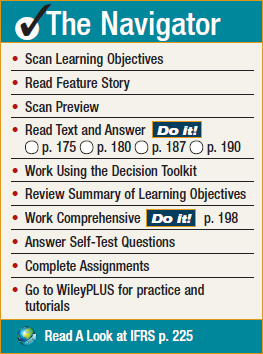CHAPTER 4

ACCRUAL ACCOUNTING CONCEPTS

LEARNING OBJECTIVES
After studying this chapter, you should be able to:
- Explain the revenue recognition principle and the expense recognition principle.
- Differentiate between the cash basis and the accrual basis of accounting.
- Explain why adjusting entries are needed, and identify the major types of adjusting entries.
- Prepare adjusting entries for deferrals.
- Prepare adjusting entries for accruals.
- Describe the nature and purpose of the adjusted trial balance.
- Explain the purpose of closing entries.
- Describe the required steps in the accounting cycle.
- Understand the causes of differences between net income and net cash provided by operating activities.
![]()
Feature Story

KEEPING TRACK OF GROUPONS
Who doesn't like buying things at a discount? That's why it's not surprising that three years after it started as a company, Groupon was estimated to be worth $16 billion. This translates into an average increase in value of almost $15 million per day.
Now consider that Groupon had previously been estimated to be worth even more than that. What happened? ...
Get Financial Accounting: Tools for Business Decision Making, 7th Edition now with the O’Reilly learning platform.
O’Reilly members experience books, live events, courses curated by job role, and more from O’Reilly and nearly 200 top publishers.

